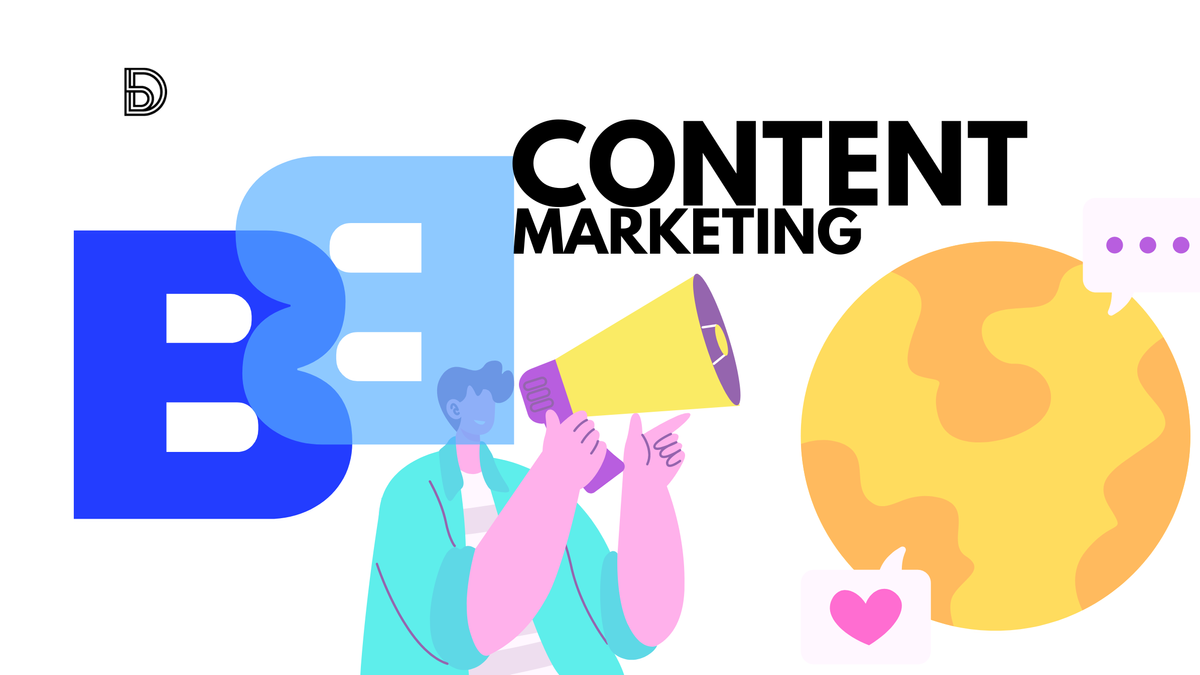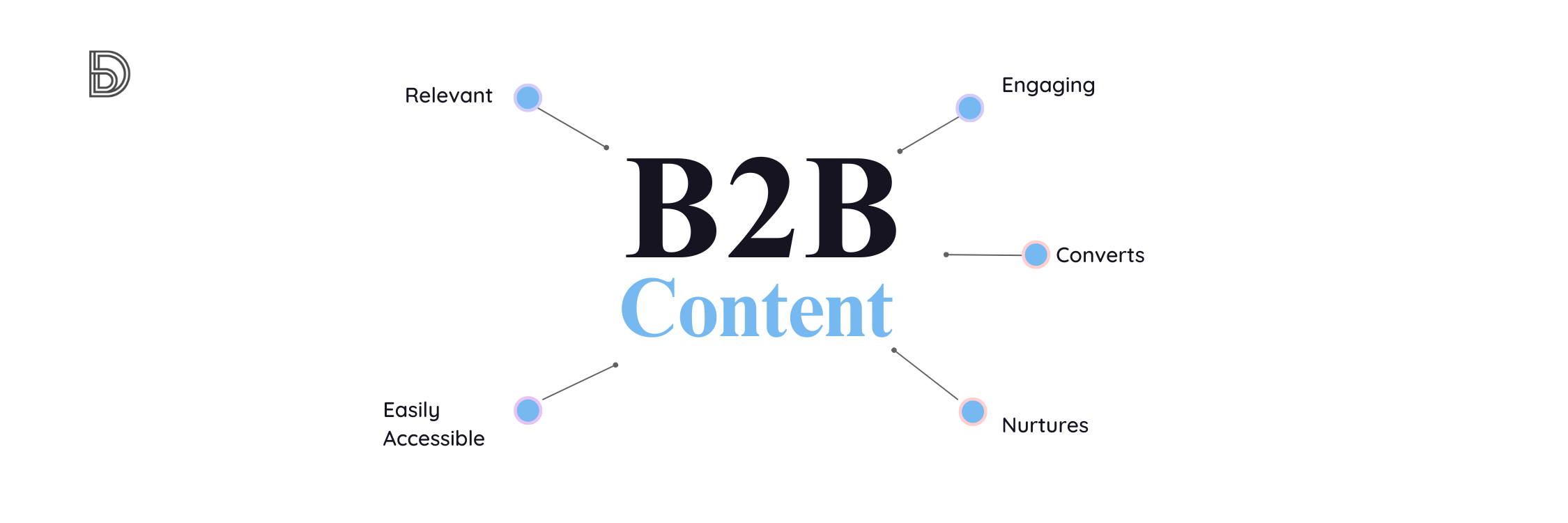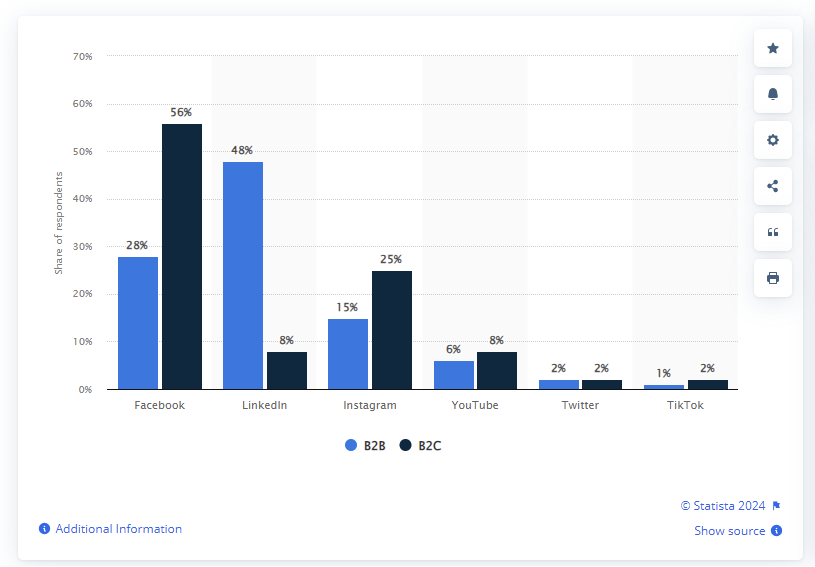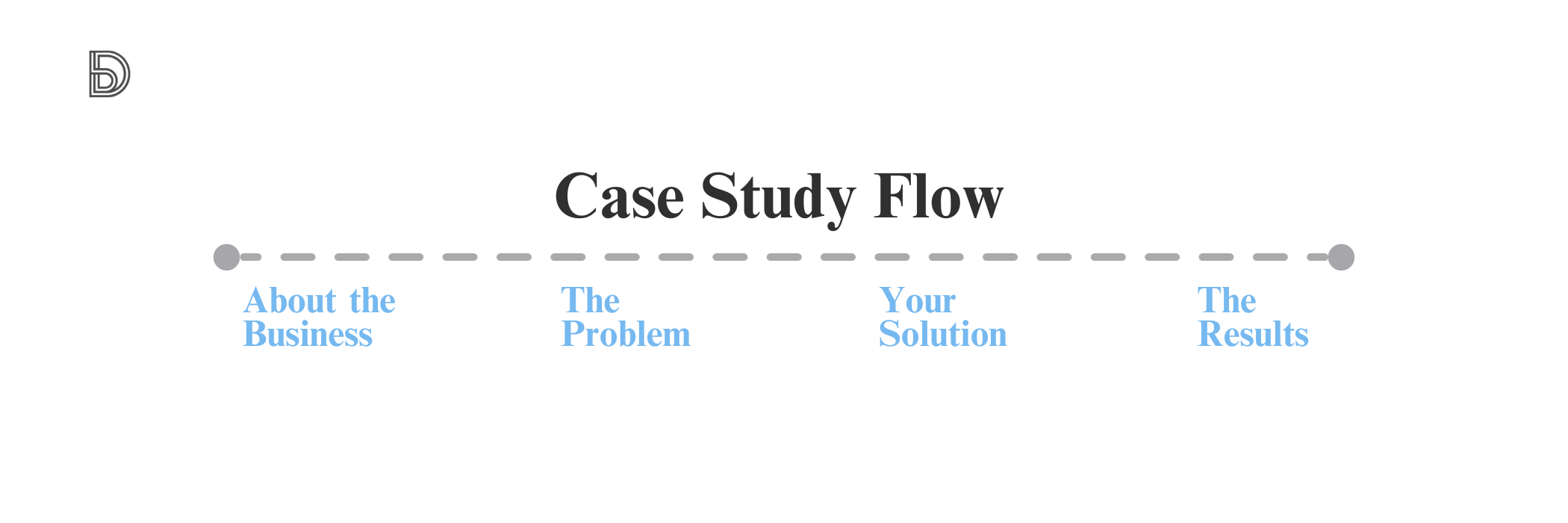Content marketing guide for African B2B startups

Successful startups and businesses worldwide cannot trivialize the importance of content marketing, and B2B startups in Africa are no exception. B2B startups must start creating and distributing valuable, relevant, and consistent content, to:
- Build brand awareness in a competitive market
- Establish credibility and trust with potential clients
- Generate high-quality leads and nurture them through the sales funnel
- Showcase their expertise and innovative solutions
- Address the unique pain points of African businesses
In this guide, we'll look at proven methods, best practices, and strategies designed specifically to help B2B startups in the African market improve their content marketing and distribution and drive sustainable growth for the startup.
Why Content Marketing
Content marketing is the most cost-effective way to get your B2B product/service in front of a lot more eyeballs. Why? Content marketing costs 62% less than traditional marketing and despite the lower cost, it still generates three times as many leads.
But content marketing for B2B business is not as easy as its lighthearted B2C counterpart because B2B content marketers have to ask themselves: "How do we develop content that is relevant to our target audience, engaging enough for them to consume, and easily accessible where and when they are most likely to convert into leads—or at least be nurtured into leads down the line?"

Although the end goals of B2C and B2B marketing are slightly different, content marketing is equally important for both. For example, consider a B2B product that helps e-commerce, transportation, and logistics startups integrate live 3D maps into their apps. If this company implements a content strategy that puts out high-quality content like case studies, reports, blog articles, and videos, it can reach way more prospects than a competitor who isn't utilizing these strategies. They can do this by:
- Using video to showcase their product, it's usability and benefits
- Collecting prospective emails through gated content.
- Increasing the chances of ranking on the first page of search engines through effective SEO strategies.
- Expanding reach and awareness with shareable content like reports.
- Building trust through case studies, high-value reports, and articles.
All of these efforts fall under the category of owned media, which includes digital assets a brand fully owns and manages, such as blogs, email newsletters, and social media profiles. Simply put, the more owned media platforms a business has, the larger its online presence, leading to greater reach and awareness. For B2B businesses, owned media is especially crucial because it builds trust and authority—two of the most important factors that influence a decision to choose one B2B product over another.
Strategies
To create a content marketing strategy that attracts leads, you have to think first about your customers, not your products. Your products might boast "X and Y" features, but so do others in the market. Even if your product is better, every other competitor claims the same, leaving you lost in the noise.
The only way to stand out with your content is to center it around your clients. Start by addressing these key questions:
- What are their biggest pain points or challenges in their current operations?
- What specific features or capabilities are they looking for in a solution?
- How have they been disappointed by similar products or services in the past?
- What specific results or outcomes are they hoping to achieve?
- What differentiates one vendor or product from another in their eyes?
- What are their long-term goals, and how can a solution align with those goals?
- Who else is involved in the decision-making process, and what are their concerns or priorities?
- How do they perceive the risk associated with implementing a new solution?
- What level of support and training do they expect after purchase?
By addressing these aspects, you can create content that resonates with your clients. This has to be the foundation of your B2B content marketing strategy.
Understanding Your Audience
- Identify Customer Personas: Create detailed profiles of your ideal clients/customers; include demographics, job roles, goals, challenges, and pain points. This way, your content is made to fit their specific needs.
- Map the Buyer’s Journey: understand the stages your customers go through before making a purchase decision—awareness, consideration, decision—and create content suited for each stage to move prospects closer to a purchase.
- Understand Customer Motivations: Determine what drives your customers, whether it's cutting costs, improving speed and efficiency, or gaining a competitive edge. Developing content that addresses these makes it more probable that they'll make a purchase.
- Address FAQs: what are the common questions and objections your customers have during the buying process? Identify them to remove any concerns and provide clarity.
- Solve Their Problems: Talk more about benefits (less on features) and how your product or service addresses your customers' issues through use cases and success stories.
Content Types
There are various content types needed for an effective B2B content strategy. According to a study by the Content marketing institute, 84% of successful B2B businesses prioritize the audience’s informational needs over the organization’s sales/promotional messages. This should tell you something about what your prospects are looking for in B2B content, and serve as a guide for your content strategy, development, and distribution.
Each content type serves a different purpose and engages your audience at different stages of the buyer journey, so you must also craft content based on specific stages of the customer journey.
Blogs
When you think about B2B content, blogs are probably the first thing that comes to mind—and for good reason.
- Boost SERPs ranking: Regular, well-optimized blog content helps your site rank higher in search engine result pages (SERPs) making it easier for prospects to find you.
- Position as a resource center: Sharing insights, trends, and expert opinions through your blog not only educates your audience but also establishes your business as a trusted industry leader.
- Drive and convert traffic: A blog can be a powerful traffic driver, bringing potential leads to your site. Once they’re there, that’s your opportunity to nurture them through well-placed CTAs, gated content, or product/service pages.
Blogs are the foundation of any strong B2B content strategy. They engage, convert, and build authority over time.
Social Media Content
Social media allows B2B businesses to engage with their audience, in real-time, helping their product increase brand awareness and driving website traffic.
In B2B social media marketing, you really need to understand where your prospects spend their time—whether it's LinkedIn, Twitter, or even niche platforms—and tailor your content accordingly, whether it's text, images, or videos. When you focus on the right platforms and content types, you will be able to engage your audience where it matters most.
LinkedIn still remains the most effective social media platform for B2B businesses worldwide, which is understandable considering it has the audience (Decision makers) and features that help you target and reach out to potential clients.

(Note that this is just a statistic, which tries to explain based on the most successful results in the past. I've seen B2B businesses doing numbers using Twitter, so test and find out which social media platform works for your B2B and double down on that.)
B2B Video marketing
Let's look at the stats:
- Video increases the average time spent on your site. Making it very important for on-page SEO.
- Video content is 1,200 times more likely to be shared, which can in turn increase website visits.
- Google just loves video content. Why? Because people love it too. In fact, according to a study, a post featuring a video is 53% more likely to show up on page 1 of Google search results
These stats make one thing clear: video is NOT just for B2C businesses. Many B2B startups in Africa are missing out on the incredible traction video can generate because they wrongly assume it’s not for them. They often think, “Once we have demo product videos up, we’re good.” But that couldn’t be further from the truth.
Take Andela, for example. They’ve mastered the art of B2B video marketing by creating engaging, informative content that highlights their value to both clients and talent. Their approach has proven that your B2B content marketing strategy needs to go beyond demo videos—regularly producing insightful, relatable, and shareable video content can help reach, engage, and ultimately convert more leads.
A lot of B2B companies rely on the same old tactics, video marketing is your opportunity to make your solution stand out and connect with decision-makers in a meaningful way.
Ebooks and whitepapers
Successful B2B businesses know how to use Ebooks and whitepapers to get these 3 things done: lead capturing, positioning, and lead nurturing. Ebooks and whitepapers are comprehensive, downloadable documents that provide detailed information on topics relevant to your audience.
- Lead Capturing: Ebooks and whitepapers basically hooks, they are high-value resources that capture leads. People are willing to give up their email addresses for content that answers their questions or solves a problem they’re facing.
- Positioning: Offering detailed and well-researched content helps you establish your business as an industry expert. It's really about showing that you understand your prospect's challenges on a deeper level.
- Lead Nurturing: They also fit perfectly into the consideration and decision-making stages. When prospects download your ebook or whitepaper, they're looking for something that will give them confidence in choosing the right solution—you!
Ebooks and whitepapers are a smart way to trade value for contacts, build trust, and guide your audience toward making well-informed purchasing decisions.
(Note for Content writers: Improve on writing whitepapers for B2B, B2C, and Web3 business)
Case Studies
Case studies are in-depth breakdowns of how your product helped a specific client achieve their goals. They provide concrete evidence of your product’s effectiveness, build trust with potential customers, and showcase your ability to deliver results. Case studies make more of an impact during the consideration and decision stages of the buyer’s journey because they help prospects visualize/ how your solution can solve their unique challenges and drive results.

Email Newsletters
Email remains the most effective method to nurture leads, leading them through different stages of the buyer's journey by delivering personalized, valuable content directly to their inboxes while being cost-effective and measurable. This leads to higher conversion rates and sustained business growth for your product.
Videos (Demos and Explainer videos)
The goal of this kind of content is simply to get your prospects to understand how to use your products effectively by guiding them through the features and functions. I would not want to spend much time talking about product demos, but know 2 things, it's important and it goes a long way in the marketing funnel, even when your product is simple to use.
Industry studies and Reports
Nothing builds trust and credibility like industry reports. Most marketers agree that industry reports are among the best type of content a B2B business should put out. A well-developed industry report boosts your brand's awareness and generates leads. Reports establish your company as an authority and serve as a very effective lead-generation tool by providing in-depth analysis, data, and insights. They also attract backlinks, which can really improve your SEO and reach. Reports also serve as an endless source of content, the insights can be repurposed across various content formats (infographics, carousels, static posts, etc), which maximizes their impact. Moniepoints recent informal report reached hundreds of thousands of people across the continent and generated thousands of leads for them.
Here is a practical example: PaidHR’s “The State of the Employed” report Just earned them a backlink, which can leads to thousands of views and generate 100's of leads down the line.
Infographics
Infographics are highly shareable static images that help present complex data and information clearly and concisely. Infographics are very easily shared, so they are really effective for increasing brand visibility and engagement on social media.
The Role of Content in B2B Marketing
Because B2B marketing often involves longer sales cycles, where decision-makers usually need detailed information to build trust and credibility, ROI analysis, and evidence of long-term benefits, B2B content marketing is geared towards being more informative, educational, and relationship-driven.
B2B content marketing should be strategically utilized at various stages of the sales funnel, every content should have a goal which should ultimately be to strip clients of their hard-earned money, or a better way to put it; to get them to opt for your product. At the top of the funnel, content like blog posts, infographics, and industry reports are designed to capture interest and get people to realize the “who” and “what” of your brand. As prospects move down the funnel, more targeted content such as whitepapers and case studies can help educate and guide them toward making an informed buying decision. Finally, at the bottom of the funnel, content like product demos, free trials, and detailed guides serves as a walkthrough to help businesses understand how to effectively use your product/service.
Distribution
Distribution in B2B is tough. Mostly because you have to target niche audiences and decision-makers within longer, more complex sales cycles and there are way fewer effective channels. Channels like Instagram and TikTok, which are very popular for B2C, barely work in B2B content marketing, so standing out and ensuring your content reaches the right people at the right time can be difficult.
Also, after all the planning, production, and distribution of content, measuring the ROI of B2B content distribution can be quite a challenge due to the multiple touchpoints and longer timelines involved in B2B purchases. However, while it may be difficult, it’s not impossible. It simply requires a precise and well-thought-out strategy to effectively track and assess the impact of your content.
Some content writers believe content distribution does not matter as much; it may not matter in fictional worlds, but it matters in ours.
We underestimate the importance of content distribution—which is just a term for everything it takes to get your content in front of your target audience at the right time.
Good content writers sometimes think that distribution is just another jargon that has a secondary importance, they believe that once you create good content, people will be dying to see it. And so usually, they spend hours developing that perfect blog post and get crickets.
But one thing I've discovered (and every great content marketer will agree on), is that the resources, effort, and time put into creating that juicy and perfect piece of content, has nothing to do with people's reactions to it. Nobody cares that you put in four months to develop a report, they're not going to become a lead out of pity, you will have to make them see it, and it is harder than it seems.
You could spend four hours developing a piece of content, and it will outperform the content you spent four months to develop. Why? Because it was effectively distributed to the people who needed it when they needed it.
B2B content marketing doesn’t exist to make people become leads or reach out to sales right away; it exists to embed subtle impressions at different touch points that will drive sales later.
So how do you implement content distribution strategies that will reach your target audience and yield results:
- Use organic and paid social
Paid social is the top paid channel B2B marketers use for content marketing.
Based on a CMI study, LinkedIn is our go-to platform for generating high-quality content marketing results, excelling in both organic and paid strategies.
Social media works for the effective distribution of B2B content, especially LinkedIn, which is again obvious because that is where the sales, operations, marketing, or technical decision makers that will use your products are. Facebook, X (Twitter), and YouTube follow LinkedIn as the most effective B2B content distribution channels.
- Use Email
You can use email to promote a blog post that is already getting a lot of traction to more of your audience, attach a case study, or even a report, depending on which stage of the journey the readers are in.
You could also use email to reach out to reporters or newsletters who cover your industry and offer opportunities to have a firsthand look at your recent benchmark report, knowing that once it's live, they'll share, helping you reach more people.
- Reach Channels
Humans naturally love groups, and B2B decision-makers aren't any different. They usually belong to various communities, spaces, and channels where they engage with other professionals and share knowledge, hot takes, and rants. To figure out where prospects hang out, start by asking your existing customers about the communities they are already active in. You can also research relevant groups on platforms like Reddit, Slack, Discord, Facebook, LinkedIn, and Product Hunt. another technique that works is directly reaching out to industry professionals to find which communities they find most valuable. This way, you find out where your prospects already hang out, and the kind of content they already find interesting and engaging enough to share, this not only informs your content distribution strategy but guides you in content development also.
Content marketing is a long term game, but it provides a huge opportunity for B2B businesses to build trust, engage prospects, and stand out in competitive markets. I will go over each content distribution platform and strategies that will help you distribute your content in a way that will help your content get seen by more prospects in an upcoming post.






